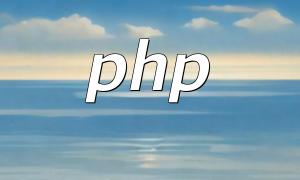Introduction
With the rapid development of internet technologies, building high-performance applications has become a key goal for enterprises and development teams. Choosing the right programming language and tech stack is crucial. As a mature and widely used language, PHP7 provides low-level development principles and techniques that can help developers achieve more efficient applications. This article shares strategies and techniques for improving PHP7 performance, providing practical experience with code examples to help readers understand and master PHP7's low-level development principles.
1. Utilizing OPcache for Performance Boost
OPcache is a built-in caching tool in PHP7 that can significantly improve the performance of PHP applications. It works by caching compiled PHP scripts, preventing the need to recompile scripts for every request. By default, OPcache is enabled in PHP7, but you can further optimize it by adjusting its configuration. Here's a simple example to check the OPcache status:
<?php
$opcacheStatus = opcache_get_status();
if ($opcacheStatus['opcache_enabled']) {
echo 'OPcache is enabled!';
} else {
echo 'OPcache is disabled!';
}
2. Effectively Using PHP7's New Features
PHP7 introduced many new features, such as scalar type declarations, return type declarations, and the null coalescing operator. These features help developers better control code logic and improve error handling. Below are some examples of common new features:
- Scalar Type Declarations
<?php
function add(int $a, int $b): int {
return $a + $b;
}
echo add(1, 2); // Outputs 3
echo add(1.5, 2.5); // Error
- Return Type Declarations
<?php
function getName(): string {
return 'John Doe';
}
echo getName(); // Outputs John Doe
echo getName() + 1; // Error
- Null Coalescing Operator
<?php
$userName = $_POST['username'] ?? 'Guest';
echo $userName; // If $_POST['username'] exists, output its value; otherwise, output 'Guest'
3. Using Asynchronous Programming to Improve Performance
Asynchronous programming is a widely used strategy in high-performance application development. PHP7 has introduced support for asynchronous programming, particularly through extensions like Swoole, which allow non-blocking IO operations to be performed. Here's a simple example of asynchronous programming using Swoole:
<?php
$server = new SwooleHttpServer('127.0.0.1', 9501, SWOOLE_BASE);
$server->on('Request', function ($request, $response) {
$response->header('Content-Type', 'text/plain');
$response->end("Hello World");
});
$server->start();
4. Using Caching Technology to Reduce IO Overhead
Reducing IO overhead is key to high-performance application development. By using caching technologies, developers can avoid frequent database access and file read/write operations, improving response speed. Redis is a popular caching tool, and here is an example of using Redis for caching:
<?php
$redis = new Redis();
$redis->connect('127.0.0.1', 6379);
$key = 'user:123';
$user = $redis->get($key);
if ($user === false) {
$user = fetchUserFromDatabase();
$redis->set($key, $user);
}
echo $user;
Conclusion
This article introduced several key optimization strategies for PHP7 low-level development. By effectively using OPcache, PHP7's new features, asynchronous programming, and caching technologies, we can significantly improve PHP7 application performance. In addition to these strategies, there are many other optimization techniques that can be applied to PHP7 development. We hope this article helps you enhance performance and build more efficient applications using PHP7.









